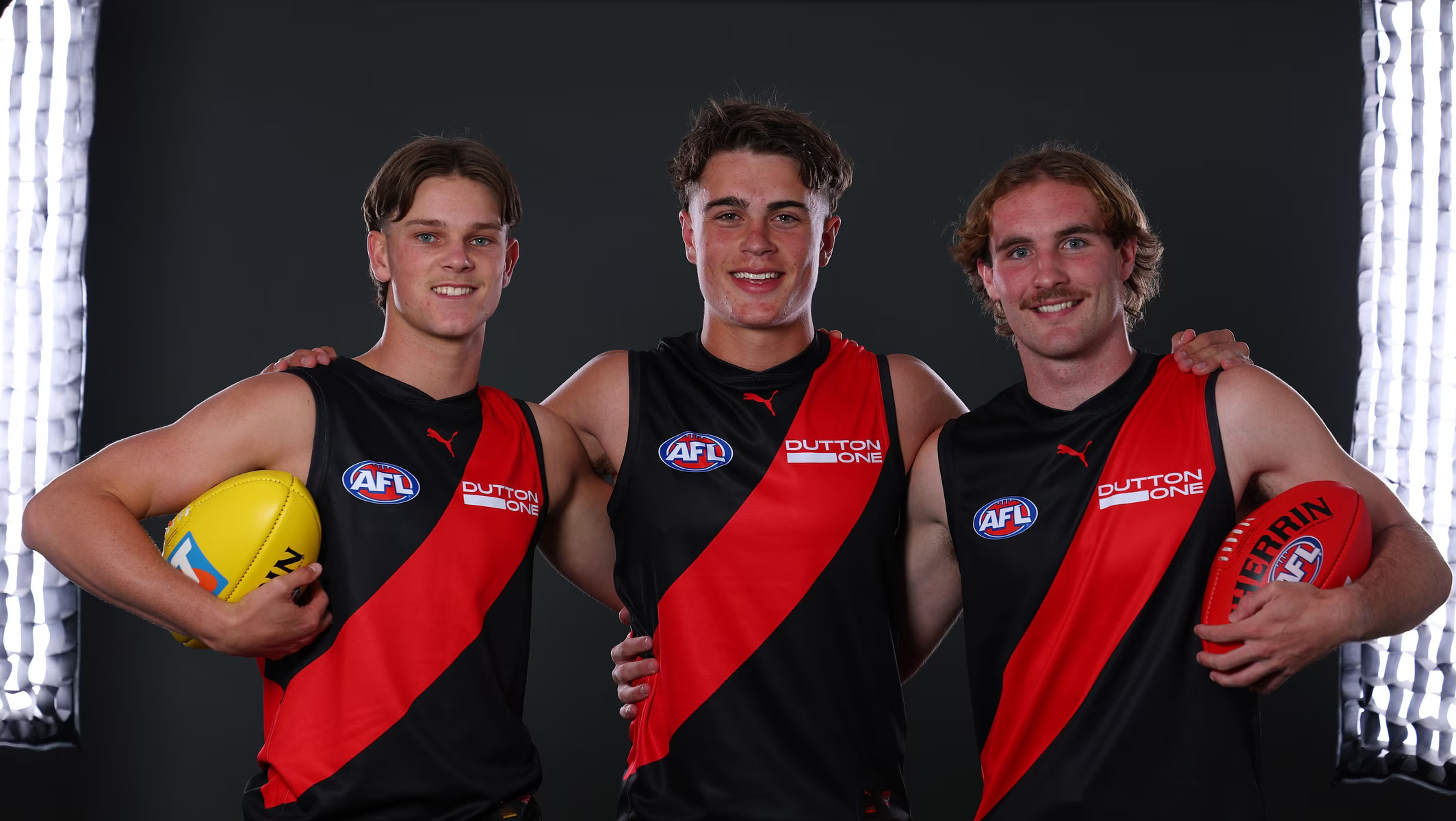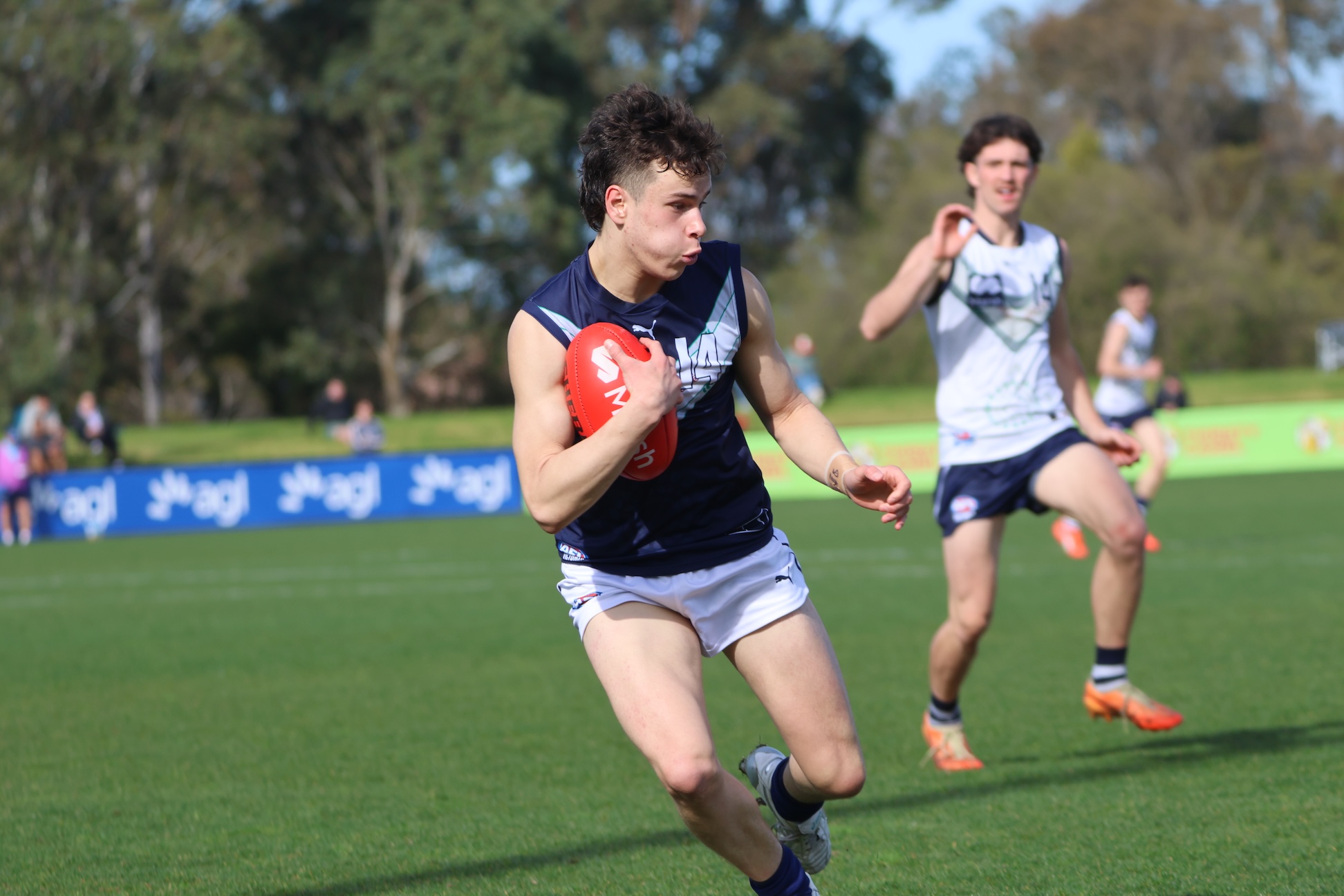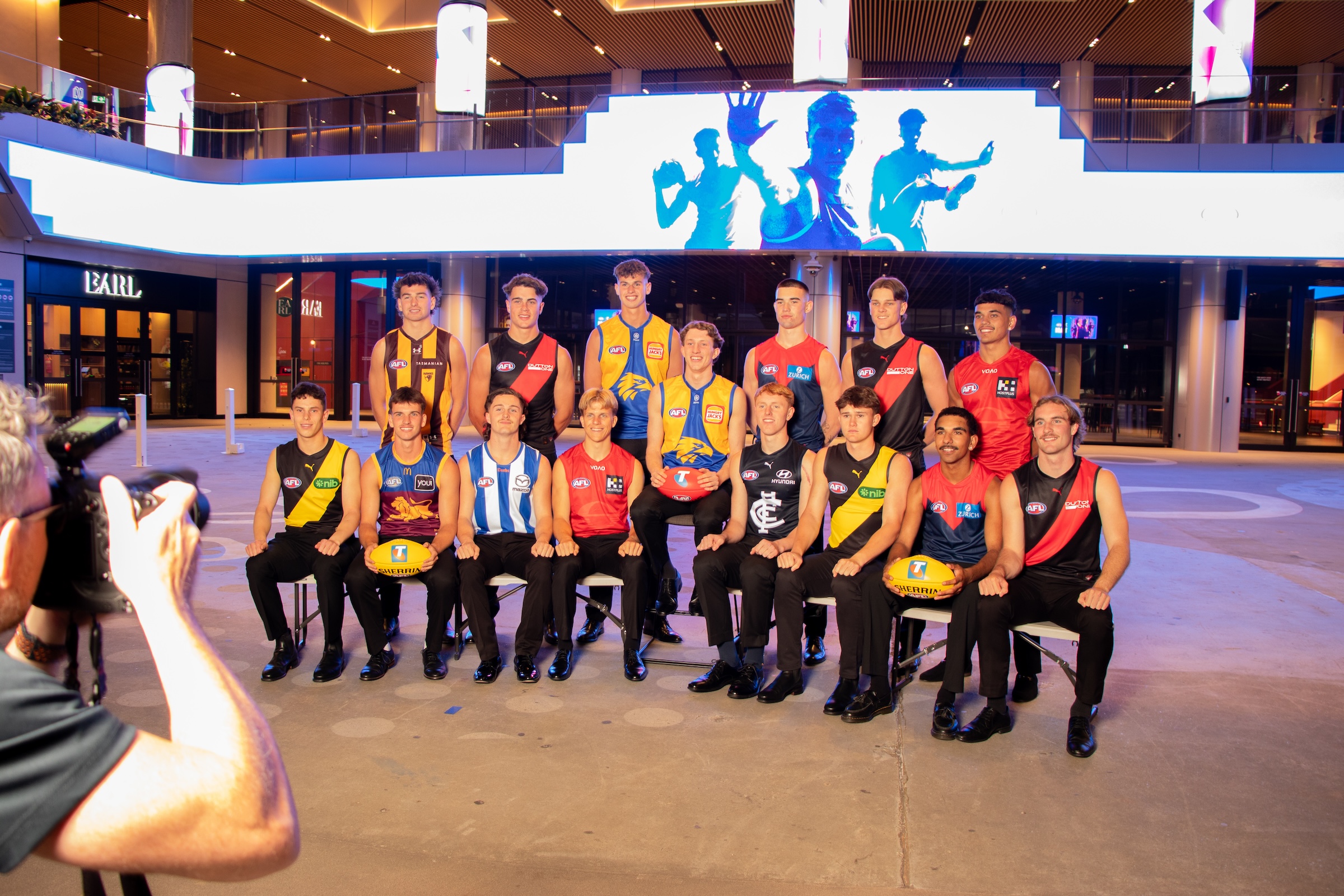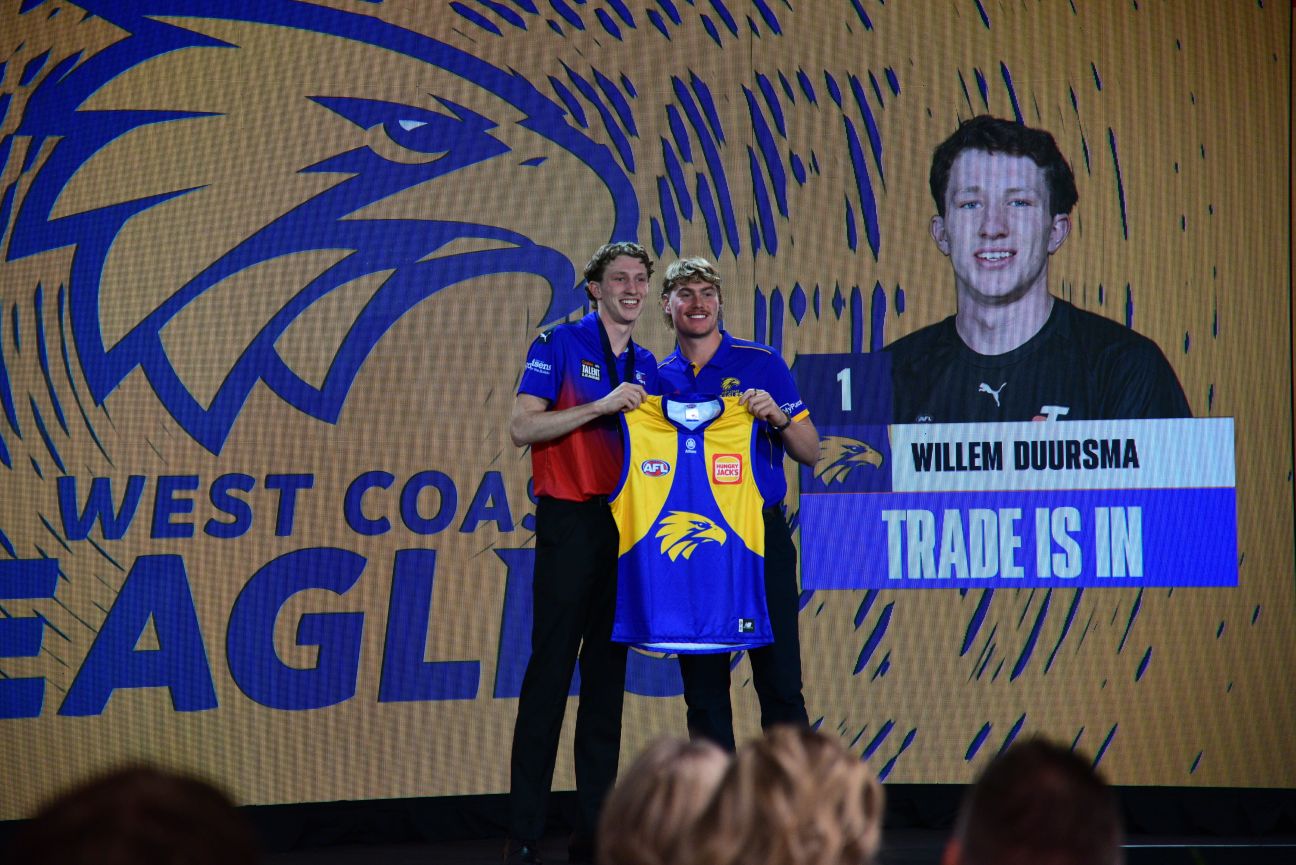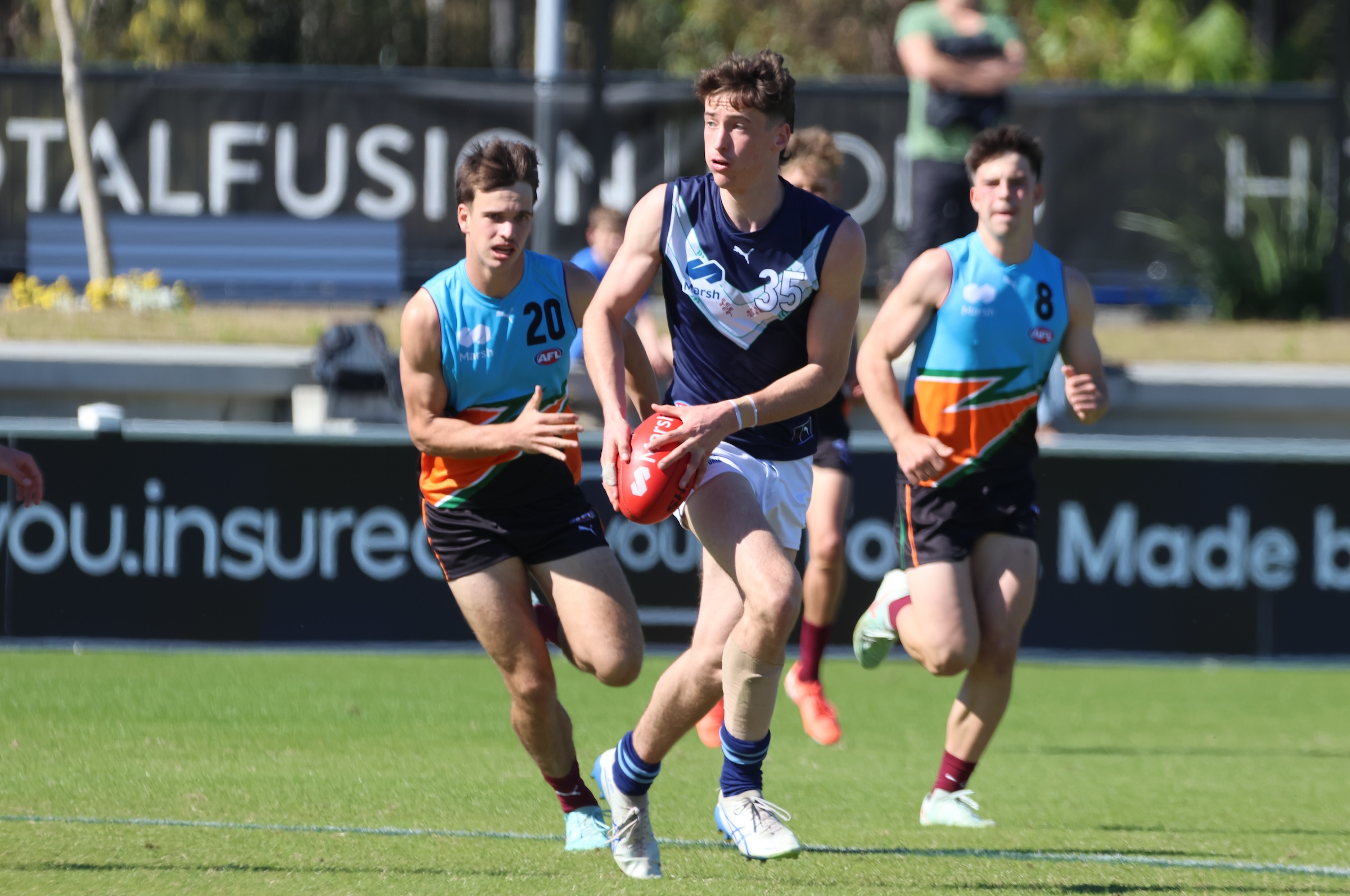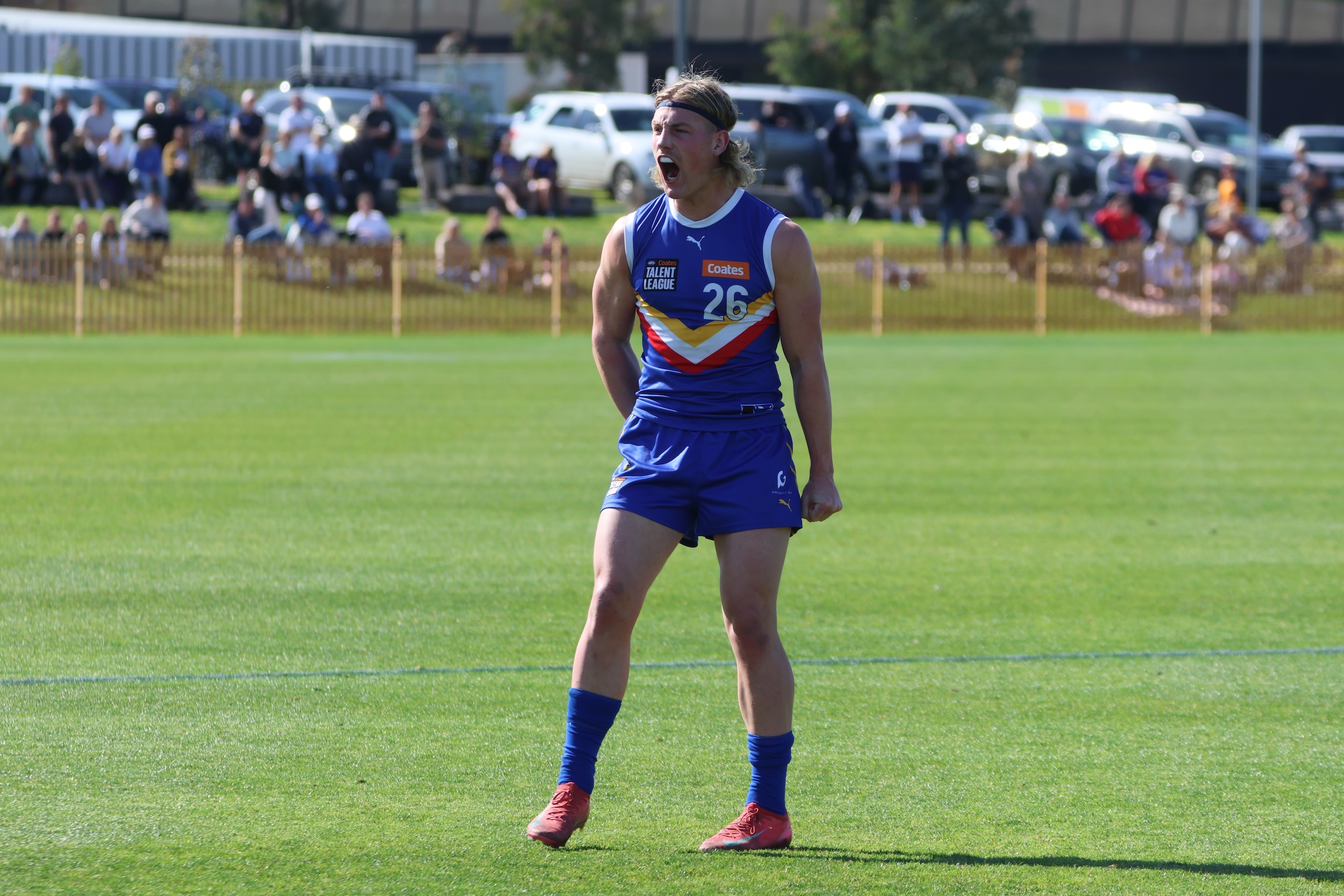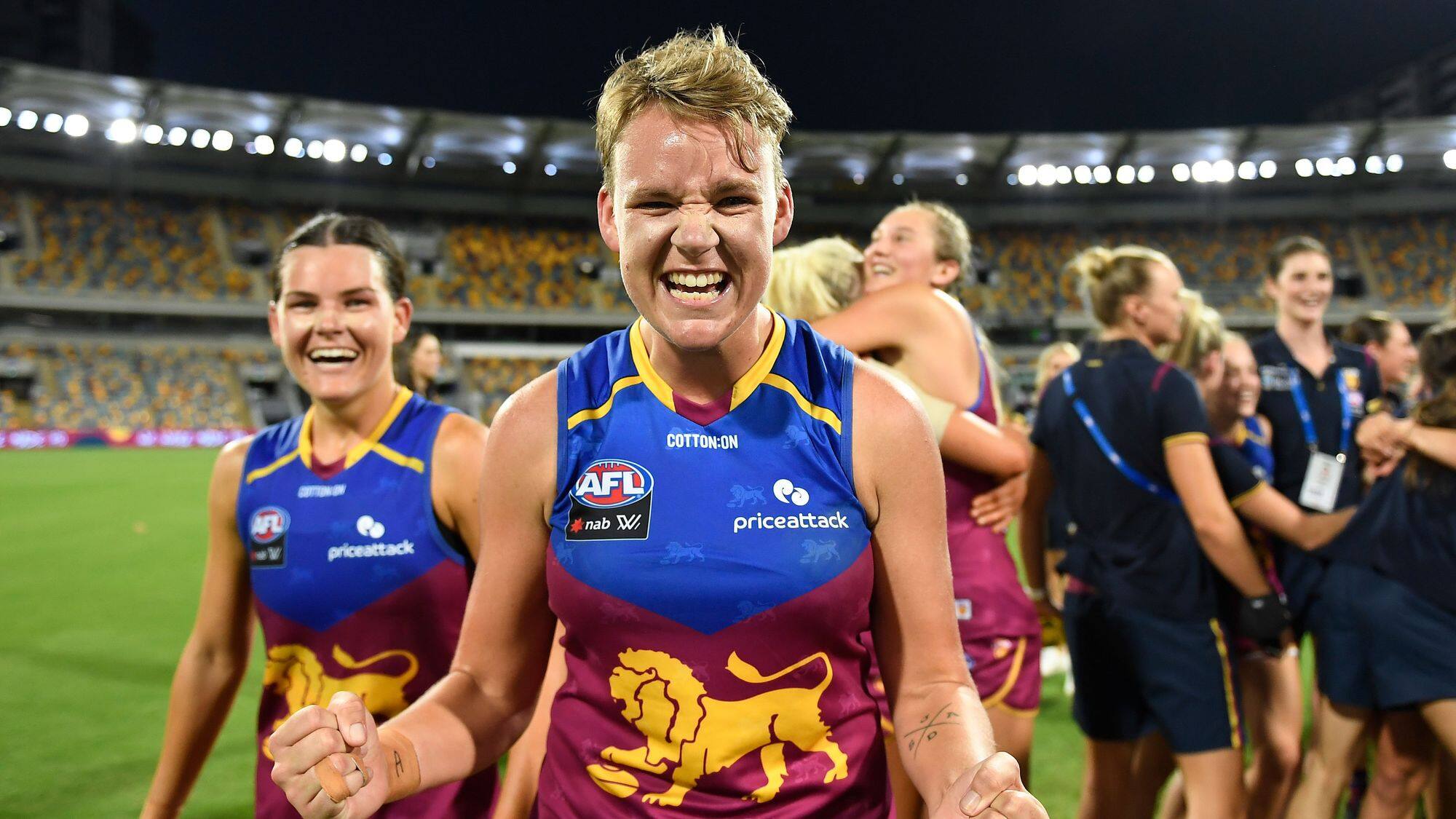
-
Snapshot
-
Analysis
-
Summary
SNAPSHOT: “A hard-running wingman with speed and precise kicking to stretch the opposition heading forward.” – Michael Alvaro
While his top-age season was cut short by injury, Harley Barker put his array of AFL traits on show throughout a stellar junior career. The Sturt prospect was part of South Australia’s state setup at Under 16 level and made his Under 18 debut as a bottom-ager last year, playing thrice for the Croweaters. He was subsequently selected for the Under 17 Futures game on AFL Grand Final day, and made the National Academy for 2025.
Named captain of Sturt’s Under 18 side, Barker’s first block of the season saw him play a handful of club games amid two appearances for the AFL Academy against VFL opposition. He then went on to form what became the All-Australian wing pairing with Matthew LeRay as South Australia took out the national Under 18 title undefeated, running out a full carnival before returning to the Double Blues.
Unfortunately, Barker only added one game to his SANFL tally as he went down with an ACL injury, forced to watch on as Sturt completed its premiership run. Nonetheless, the 18-year-old landed a National Draft Combine invite and is still widely considered a top 30 prospect. He’s a Port Adelaide supporter who draws comparisons to Ollie Dempsey, and does plenty of homework into the running patterns of current star wingmen.
Click the ANALYSIS tab for more
STRENGTHS:
+ Kicking
+ Outside run
+ Overhead marking
+ Speed
+ Versatility
+ Work rate
IMPROVEMENTS:
- Contested game
- Ground balls
Footballing traits aside, Barker has all the tropes of a current day wingman in his athletic profile. He blends speed with strong aerobic underpinnings, consistently able to find the space out wide and immediately take off into attack. His powerful turn of foot was shown at South Australia's preseason testing day where he notched a 2.864-second 20m sprint, which would have been good enough for second at the National Draft Combine.
A metres-gained type of footballer, Barker takes the game to the opposition while moving the ball from end-to-end. His running capacity allows him to work both ways, supporting the defence before connecting into attack. He seemed to find a happy knack for being in the perfect position to receive when South Australia cleared from d50, the middle, or a stoppage situation, looking to stretch the opposition by expertly using the expanses.
At the end of Barker's run-and-carry is usually sound kicking skills. He can be precise or penetrative, priding himself on being able to open up the game with his decision making. Being a kick-first kind of player - going by foot around 60-70 per cent of the time - makes him a dangerous player in transition, able to breach both 50m arcs and break down defences. An added bonus to that is his ability to hit the scoreboard quite regularly.
Another strong aspect of Barker's game is his marking ability. Measuring up at 188cm, he has the size and clean hands to compete overhead, taking the ball cleanly under pressure. Doing so makes him a reliable option when moving the ball into compromising positions, or to make the most of shoddy delivery. Barker's strong vertical leap means he can hold his own against taller opposition too - another piece of his powerful athletic profile.
In all, Barker's breadth of traits makes him quite a versatile prospect. He cut his teeth in South Australia's Under 18 side as a half-back last year and was exposed to more of a mid-forward rotation early in the season with Sturt. Despite clearly doing his best work on the wing and being comfortable there, he is actively seeking to learn different positions to expand his game. That desire alone will be highly appealing to AFL club recruiters.
On the topic of different roles, Barker can certainly look to enhance his contested ball winning ability if he is to spend more time in midfield. He went at a 79 per cent uncontested rate at the National Championships and has quite a low tackle count, supporting defensive ball movement rather than outwardly applying pressure. Cleaning up his ground ball work will help in a ball-winning sense, especially in the cut and thrust of stoppages.
Barker currently averages around 16-17 disposals per game at all levels, not quite being a high accumulator. If he can balance out his inside-outside ratio and heighten his crumbing ability, it will go a long way to impacting games more regularly. Being quite prominent on the spread, Barker inevitably has to demand the ball, but is also working on finding his voice on-field and becoming more of a leader, as he did in the state program.
DRAFT RANGE: 25-35
SUMMARY:
There are players who simply have AFL attributes and Barker is one of them. His athletic profile – boasting speed and power – suits his role out on the wing, while his work rate and skills make him highly adaptable to several positions. That versatility is appealing, though the South Australian has done most of his best work on the outside. Clubs sometimes take a cautious approach to selecting injury-struck players who are unlikely to impact in their first year, but a longer-term approach is set to be taken with Barker, whose profile will be difficult to overlook early in the second round.
AFL U18 Championships
| Season | Team | K | HB | D | M | CP | UP | T | HO | CLR | I50 | R50 | GL | GM | K | H | D | M | HO | T | G | DC |
|---|---|---|---|---|---|---|---|---|---|---|---|---|---|---|---|---|---|---|---|---|---|---|
| 2024 | South Australia | 19 | 8 | 27 | 12 | 9 | 20 | 1 | 0 | 1 | 5 | 4 | 1 | 3 | 6.3 | 2.7 | 9.0 | 4.0 | 0.0 | 0.3 | 0.3 | 44 |
| 2025 | South Australia | 40 | 24 | 64 | 22 | 13 | 50 | 7 | 0 | 2 | 13 | 4 | 4 | 4 | 10.0 | 6.0 | 16.0 | 5.5 | 0.0 | 1.8 | 1.0 | 74 |
| Total | - | 59 | 32 | 91 | 34 | 22 | 70 | 8 | 0 | 3 | 18 | 8 | 5 | 7 | 8.4 | 4.6 | 13.0 | 4.9 | 0.0 | 1.1 | 0.7 | 118 |

